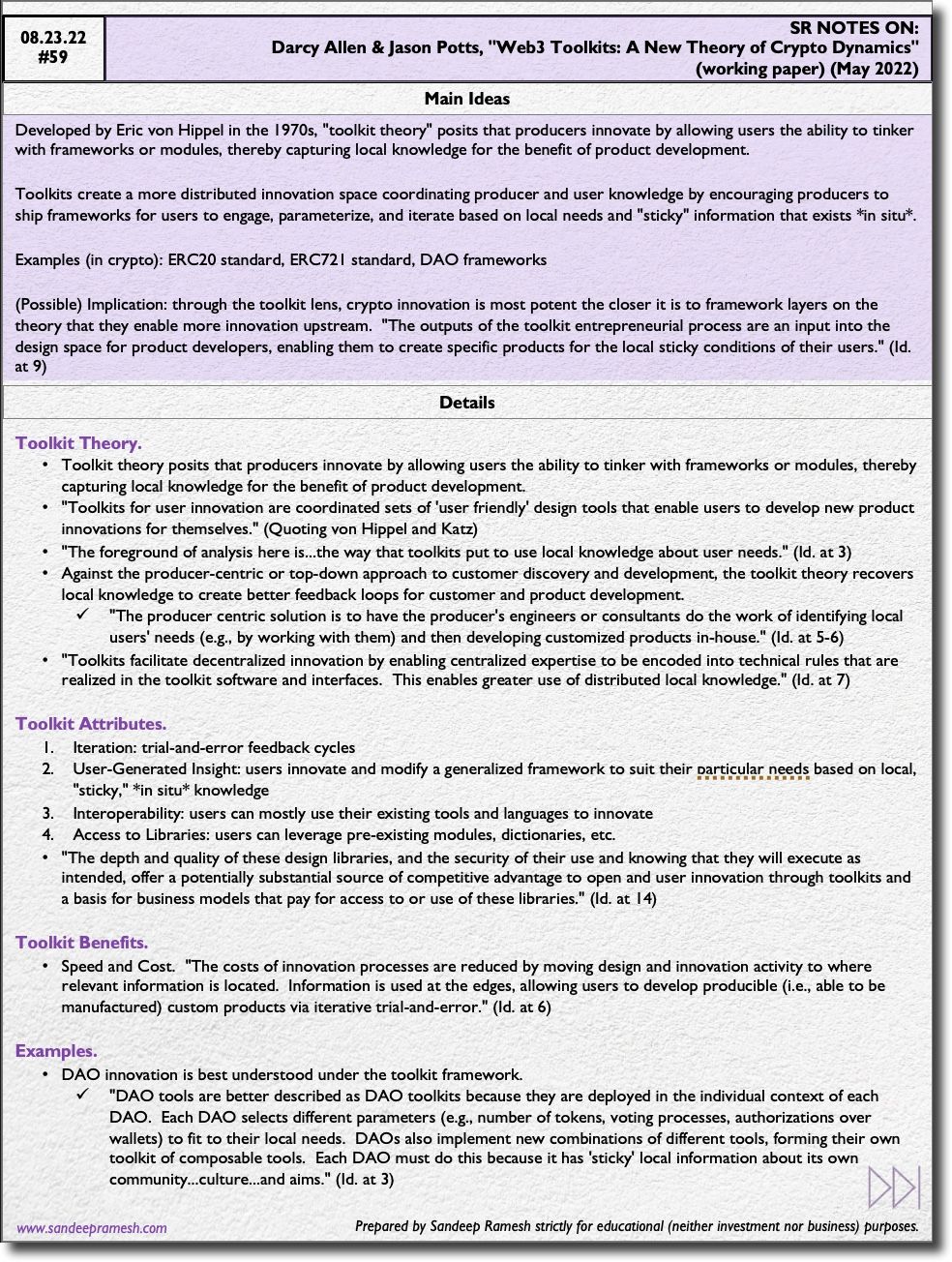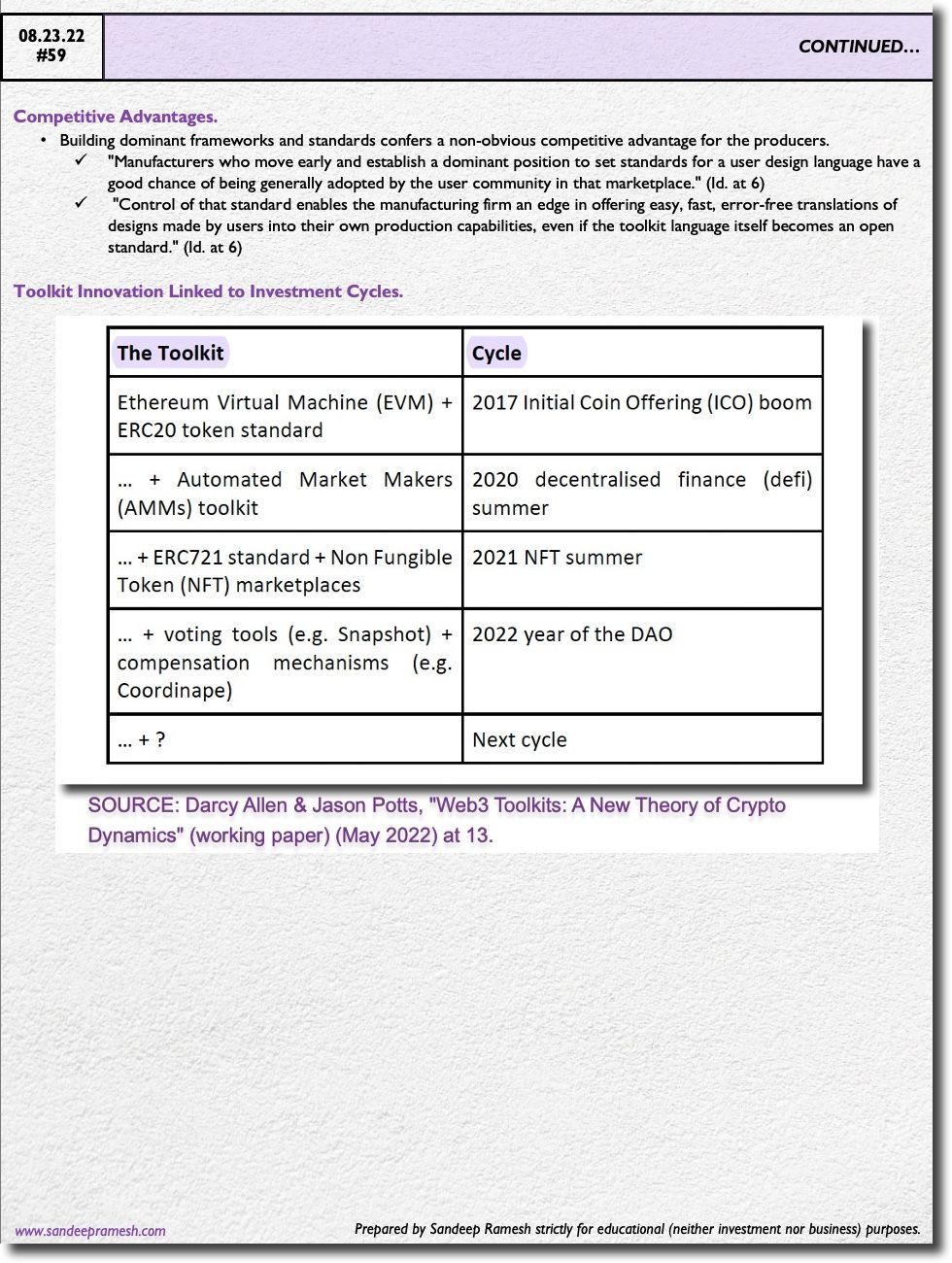Source: Darcy Allen & Jason Potts, "Web3 Toolkits: A New Theory of Crypto Dynamics" (working paper) (May 2022)
Developed by Eric von Hippel in the 1970s, "toolkit theory" posits that producers innovate by allowing users the ability to tinker with frameworks or modules, thereby capturing local knowledge for the benefit of product development.
Toolkits create a more distributed innovation space coordinating producer and user knowledge by encouraging producers to ship frameworks for users to engage, parameterize, and iterate based on local needs and "sticky" information that exists in situ.
Examples (in crypto): ERC20 standard, ERC721 standard, DAO frameworks
(Possible) Implication: through the toolkit lens, crypto innovation is most potent the closer it is to framework layers on the theory that they enable more innovation upstream. "The outputs of the toolkit entrepreneurial process are an input into the design space for product developers, enabling them to create specific products for the local sticky conditions of their users." (Id. at 9)
The Details.

